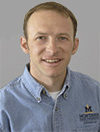Renaissance Nutrition, Inc. held its annual company educational conference in late July, with a lineup of 10 nationally recognized speakers from the dairy industry. A total of nearly 150 people from both the U.S. and Canada, including company nutritionists, university dairy extension faculty, veterinarians and allied industry personnel, attended the three-day meeting to learn about the newest information and research on cow management, cow comfort, nutrition and economics. The following summary shares some of the take-home messages provided by the 17 presentations offered at the conference.
• Dr. Rick Grant of the Miner Institute discussed the impact of management and environment on feed intake, citing research showing that management factors can explain over half the variation in milk production from farm to farm:
1. Herds that feed for some refusals and push up feed more frequently make more milk.
2. Excessively high stall stocking density (greater than 120 percent?) limits milk production. In particular, first-calf heifers are most likely to be negatively impacted when housed together with older cows in overcrowded conditions.
In support of these findings, he also reviewed a growing body of evidence showing that dairy cows have a minimum resting requirement of 10 to 12 hours a day. For every 3.5 minutes of lost rest, cows sacrifice one minute of eating. Dry matter intake is positively correlated with resting time.
• Dr. Bob Collier from the University of Arizona discussed some ongoing research evaluating conductive cooling as a new approach for reducing heat stress in dairy cows. The experimental system utilizes a commercially available, water-filled solar heat exchanger under freestall bedding.
Research results to date comparing conductive cooling to more proven heat abatement practices have been variable but encouraging. Assuming they become commercially viable, conductive cooling systems appear to hold the most economic potential for dairies or areas with low water availability, high humidity, colder groundwater temperatures, sand bedding, high electricity costs and the opportunity or need for winter warming.
• Dr. Greg Bethard of Dairy Records Management Systems in Raleigh, North Carolina, discussed replacement economics. Replacement costs are typically the second-highest cost of milk production, second only to feed costs.
Even though they’re presently at an all-time low ($1.00 to $1.50 per cwt of milk, as compared to the typical $2.00 to $2.50 per cwt of milk), it is still important to monitor them frequently and correctly to identify potential opportunities for improvement. For many herds, improving age at first calving (AFC) is a major driver to reduce replacement costs.
Each additional month of age typically equates to $75 to $100 per heifer in added cost. Improving the heifer reproductive program is often the biggest opportunity to reduce AFC. Good facilities and labor, consistent tail chalk and prostaglandin use are key components of heifer reproductive success for many herds.
Assuming a 23-month AFC, targeting a heifer inventory of 110 to 120 percent of the milking cow inventory allows producers the flexibility to grow, sell or cull more aggressively, he said.
• Dr. Limin Kung of the University of Delaware discussed the impact of wild yeasts on forage quality. Bad yeasts may lower dry matter intake, reduce fiber digestibility and/or alter rumen function. Air (oxygen) is a major enemy of silage quality because it allows yeasts to proliferate.
Yeasts that assimilate lactate are the primary initiators of aerobic instability and cause dry matter losses. Molds enter the picture subsequent to yeast growth and activity. Anything that will minimize yeast numbers in silage will benefit silage dry matter recovery and aerobic stability.
Important management considerations when making silage include rapidly excluding oxygen and facilitating the production of antifungal acids, followed by maintenance of anaerobic conditions.
• As a tie-in with his earlier presentation, Dr. Rick Grant also discussed cow comfort economics. The economic consequences associated with cow comfort are substantial.
For cows not meeting their minimum daily resting requirement (10 to 12 hours of lying time), each additional hour of lying time should generate an additional 2.5 to 3.5 lbs of milk. Reducing time away from the pen from six hours down to three hours per day should increase income by an extra $1.00 to $1.50 per cow per day.
Excessive overcrowding negatively impacts herd health and profitability in different ways, including decreased rumination time, reduced udder health and/or impaired reproductive performance. The take-home message of this presentation could perhaps best be summarized by Dr. Grant’s statement that “time is everything to the cow.”
• Dr. Gordie Jones of Central Sands Dairy in Nekoosa, Wisconsin, concluded the conference by sharing his perspectives on achieving excellence on the dairy. Priorities in his approach to successful dairy management center on the following philosophy:
“Cow comfort is first, forage is king and better forage is better.” A high pregnancy rate means you keep cows and a good dry cow program “stops early fresh cow losses.” He also emphasized the importance of recognizing that people are the key ingredient to success for a herd’s nutrition, dry cow, cow comfort and reproductive programs. PD
Bass is a veterinarian with 15 years of experience in dairy nutrition.



